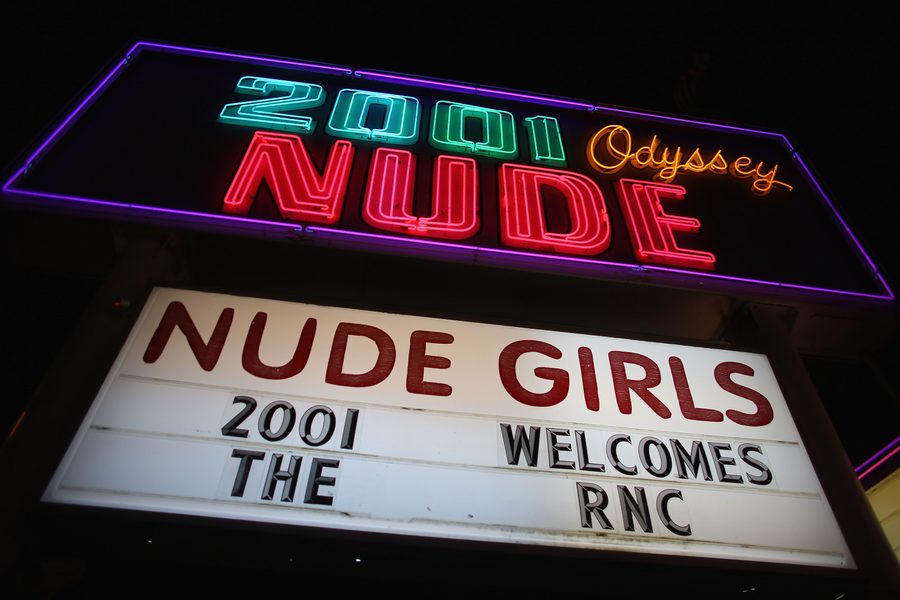
Addressing a packed room of working women and their supporters this past week at the Ford Foundation, SEIU Healthcare 775NW President David Rolf told them not to listen to people who say they need to make their lives “more like the lives of ‘real workers.’ They are real workers.”
Rolf’s remarks came while praising the work of the National Domestic Workers Alliance, which had just released a groundbreaking study of domestic workers in the United States. They have succeeded in organizing a workforce that many had thought impossible to organize. It’s an assumption also commonly made about another “excluded” class of service workers: sex workers.
Like domestic workers, sex workers perform labor that is often understood as just what women do (read: for free). They’ve had to fight just to convince people, even other people in the labor and women’s movements, that their work is work, and that they deserve control over it. But whereas the domestic workers movement has enjoyed tremendous support over the last 10 years, sex workers have largely been left to fight on their own.
One sector of the sex trade has been the focus of U.S. labor organizing: exotic dancing, or stripping. Dancers have staged union drives, pickets, and strikes, and have won unionization at one shop, the Lusty Lady in San Francisco. The Lusty Lady is sometimes considered the ne plus ultra of dancer activism — but it’s not the only model out there. I say this as a proud, former member of the Exotic Dancers Union: What worked in one shop is not going to work everywhere, and like the domestic workers, if we hold out for a union, we might be waiting for a long time.
The same factors that make dancing a flexible job also allow dance club management to violate their workers’ rights. In most clubs, management charge dancers “stage fees” per shift, require dancers to share their tips with support staff and management, and illegally classify dancers as independent contractors on the books while treating them like employees in the club. Over the last 15 years, hundreds of dancers have benefited from class action lawsuits brought against club owners, usually by former dancers who are less fearful of retaliation. Last month saw one of the biggest settlements awarded a dancer class — $13 million, in a suit against the Spearmint Rhino chain—but using lawsuits to recover stolen earnings isn’t a viable option for most dancers. It’s also no replacement for organizing.
So where can dancers who want to organize begin? As is the case for many service workers, the first step for dancers is to learn what rights they already have. But dancers may need different or additional resources than labor organizers can offer them. Rather than view this as an obstacle, We Are Dancers, a project led by current and former dancers in New York City, is using it an entry point for successful outreach.
As the first members of We Are Dancers came together, co-founder Rachel Aimee told me, “we talked about how other groups of dancers had organized in the past.” Aimee is a former dancer, as well as a writer and one of the founders of the influential sex work magazine, $pread. She was familiar with dancers’ range of concerns and the history of previous organizing.
“Even though the Lusty Lady is awesome, and there should be lots more dancer-owned clubs, it’s not necessarily a model that works for all the women in the stripping industry,” says Aimee. “Working on the books and owning and running a club isn’t necessarily what most dancers are looking for in the stripping industry.”
Instead, We Are Dancers looked to “Dancers Are Special,” a project by the D.C.-based community organization Different Avenues. As Aimee explained, it’s an approach that is “more about harm reduction, education and community building, rather than trying to push a specific agenda for how we should be changing the industry.”
In November We Are Dancers launched a comprehensive guide for dancers on legal rights, health, and finance online. (They will soon release a translated website, in Spanish, Russian and Portuguese, as well as a print version of their resource guide to be distributed in New York dance clubs.) In partnership with the Sex Workers Project at the Urban Justice Center, which provides client-centered legal and social services to individuals who engage in sex work, We Are Dancers shares legal resources with dancers on labor violations, including sexual harassment and discrimination, as well as on rights related to employee and independent contractor status. They also offer referrals to understanding health care and financial professionals who dancers can turn to without fearing judgment or exposure. “Dancers may be good at taking care of others,” their guide states, “but we also have to take care of ourselves.”
One critical step for We Are Dancers is getting their outreach materials into the hands of dancers: some clubs won’t allow women to enter “unescorted” by men and others charge steep cover fees for entry. Like any organizers going into a new workplace, they’ll need to find a way to connect with people who are on the job without exposing them to scrutiny from co-workers or management. For this reason, they’d like to train and pay current and former dancers as outreach workers, so dancers have the opportunity to get connected with their peers.
“I hope that dancers will start to feel that they have more options for dealing with some of the problematic aspects of working in the industry,” Aimee says, “and that they don’t just have to accept the way things are — whether that means moving to a club that treats the dancers better, finding community support to help them deal with personal relationship issues, or calling Sex Workers’ Project to talk about options for taking legal action against a club.”
Ultimately, what We Are Dancers accomplishes will result from the direction and support they receive from the community. “We don’t really have a plan for what kind of a group we want to form,” says Aimee. “We are really open to seeing how it develops and what there is a demand for. It feels more natural and likely for community-building to develop out of providing a useful service or resource.”
We Are Dancers, like the National Domestic Workers Alliance, imagines they will be successful through building networks of dancers that reach beyond the boundaries of one workplace. By first focusing on workers’ immediate needs, and building power through meeting workers where they are at, We Are Dancers has that same potential to organize so-called “excluded” workers — who are only as excluded as others devalue their work.






